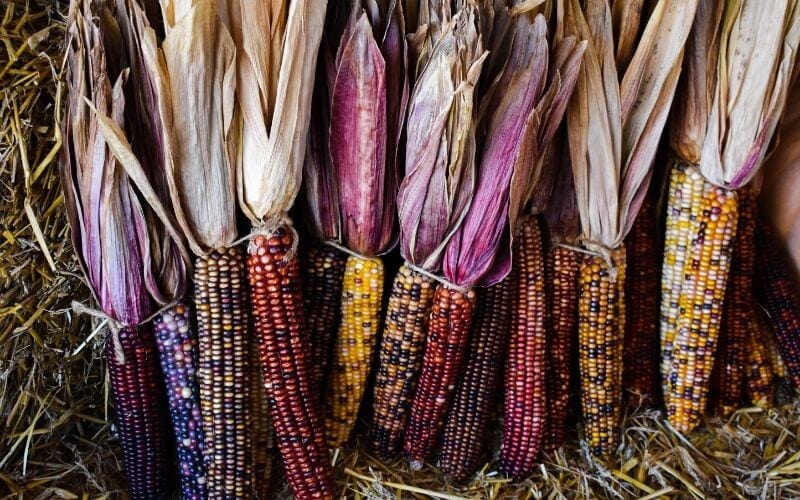
Corn is one of the most popular vegetables that gardeners grow. Everyone loves homegrown sweet corn paired with hamburgers – an iconic American dinner.
You might not realize that there are more than one best sweet corn varieties that you can grow in your garden.
Corn comes in a range of colors, shapes, and sizes. That’s right – not all corn is yellow! You can grow red, orange, pink, blue, and even purple corn.
No matter what type you select, corn is full of vitamins, fiber, and antioxidants.
Corn can be enjoyed in many different ways because there are different types of corn. You can grow popcorn, sweet corn, flint corn, flour corn, and dent corn. Who knew that corn was so versatile?
If you want to grow some juicy, sweet corn in your backyard, we picked the best sweet corn varieties for your garden.
Something you should know is that corn is open-pollinated, so if you try to grow several varieties at one time nearby, they’ll cross-pollinate together, and you won’t end up with the type you wanted. It’s best to pick one variety.
3 Main Types of Sweet Corn
When picking a type of sweet corn to grow, you’ll find three main types, and it’s essential to understand the differences before you choose what you want to grow.
1. SU
The most commonly grown cultivar for home gardeners is SU, which is typically referred to as sugary corn.
They have a really sweet, delicious taste. If you’re looking for this type of corn, you should find “SU” on the seed packet.
One reason to consider growing SU corn is that it tends to be more tolerant of cool temperatures.
However, once you pick the corn off of the plant, it doesn’t have a long shelf life. You’ll need to eat it quickly, which shouldn’t be a problem considering how delicious it is!
2. SH2
This variety is often called “super-sweet” because of its high sugar content. SH2 stands for shrunken seeds, but sometimes you’ll see a description similar to “ultra-sweet.”
The only problem with this variety is that it tends to be temperamental and harder to grow than other types of corn. It does store for about one week in the refrigerator.
3. SE
Here is another type of corn that is super sweet. Just like SH2, SE corn has a high sugar content, but the kernels last longer on the plant after you harvest them. SE stands for “sugar extended.”
This type of corn is sweet, tender, and crisp. The only downfall is that it is a bit pickier about having the right growing conditions.
For example, it does require warm soil temperatures to germinate and grow, which can make it more challenging, depending on where you live.
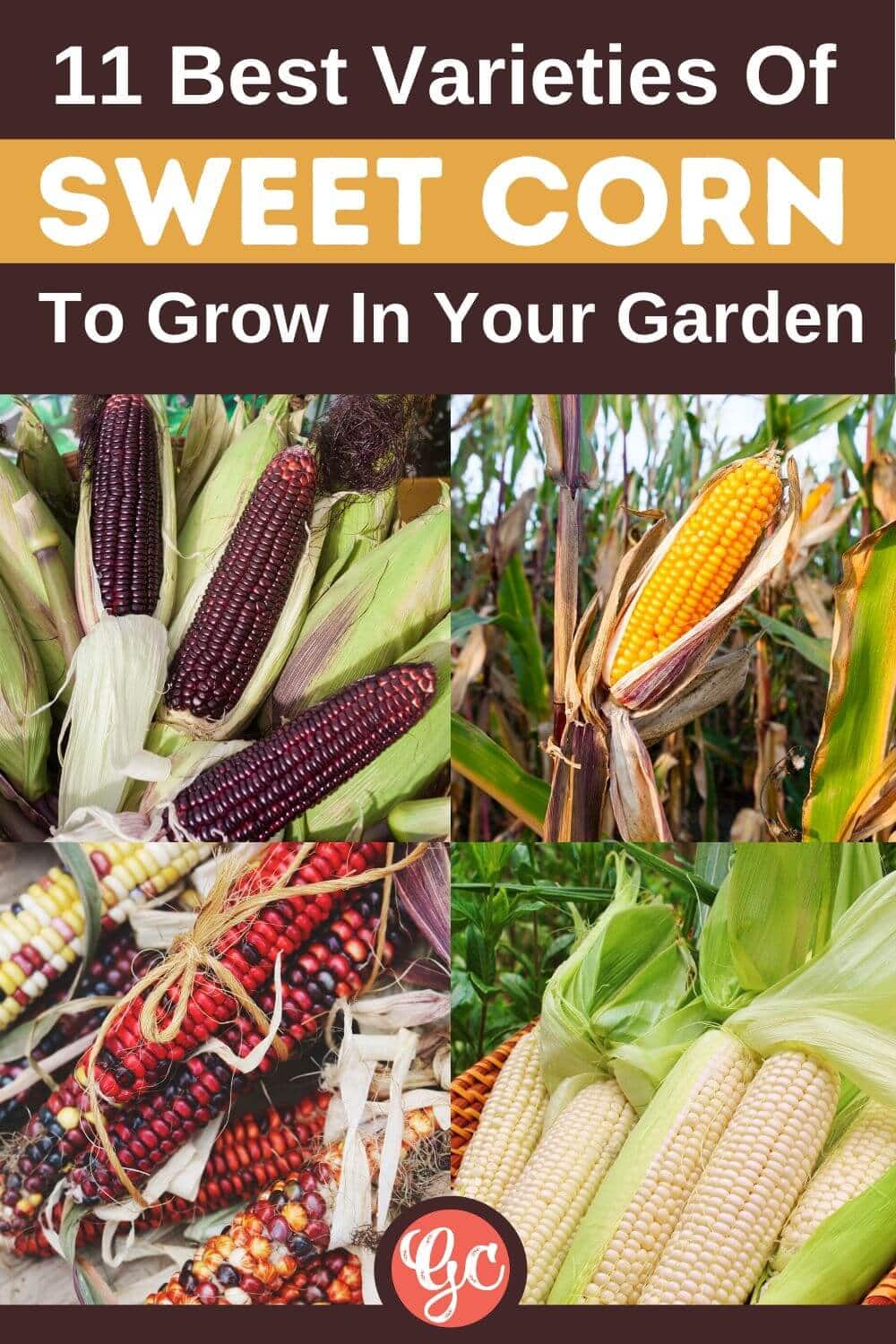
11 Best Varieties Of Sweet Corn To Grow In Your Garden
If you’re looking for a sweet corn variety to grow in your garden, here are 11 types of sweet corn consider adding to your garden.
1. Honey Select Hybrid
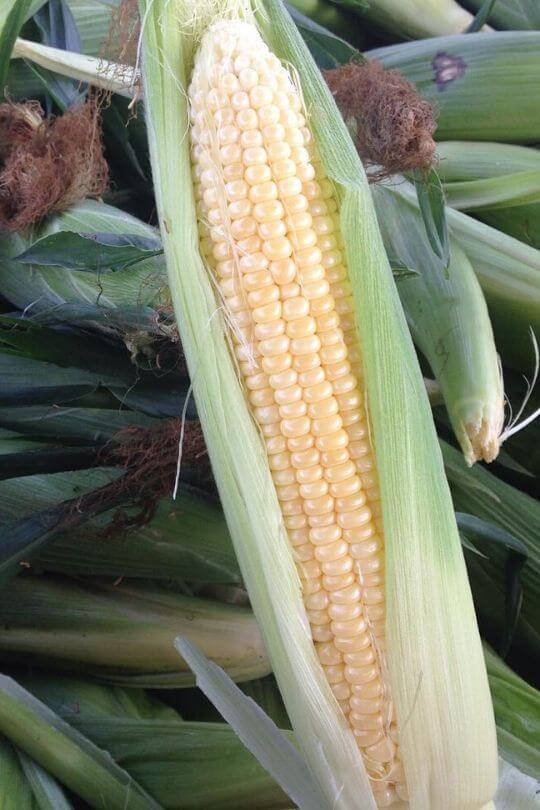
Here is an award-winning triple sweet corn variety that is a hybrid of 75% SE and 25% SH2. That blend of cultivars creates corn that is rich and sweet, something that you cannot beat.
Honey Select Hybrid is ready to harvest in about 80 days with ears that measure eight to nine inches long.
The stalks can reach up to six feet tall. Any gardener in USDA hardiness zones 3-11 to can grow Honey Select Hybrid corn, so long as you have a spot in your yard that receives full sunlight.
Honey Select is an All-American Selection winner, and that means you’ll love how delicious this corn is.
They won based on taste and ease of growth. The kernels keep well, and you don’t have to harvest them all at one time.
Be sure to wait until the soil is warmed up to plant. This variety likes average and loamy soil that is moist and well-draining.
2. Ambrosia Hybrid
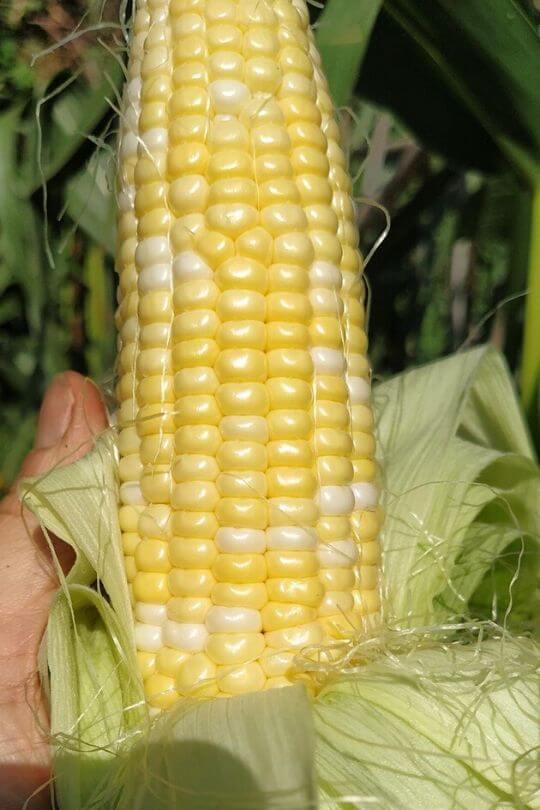
Ambrosia is similar to a custard, so you can guess why this corn is named after a delicious dessert.
This is an SE corn variety with a deliciously sweet flavor that has plump yellow and white kernels. For new gardeners, Ambrosia Hybrid is a great choice, and it produces a high yield.
Ambrosia Hybrid is a great candidate for home gardeners. It needs full sunlight to grow well, and it takes around 75 days to reach full maturity.
Once mature, the ears measure eight inches long, and the stalks reach 6 ½ feet tall. The ears can have up to 16 rows of kernels.
Ambrosia Hybrid grows well in USDA zones 3-11. Plant the seeds in soil with a pH level of 6-6.5. It does prefer warmer temperatures!
3. Nirvana Hybrid
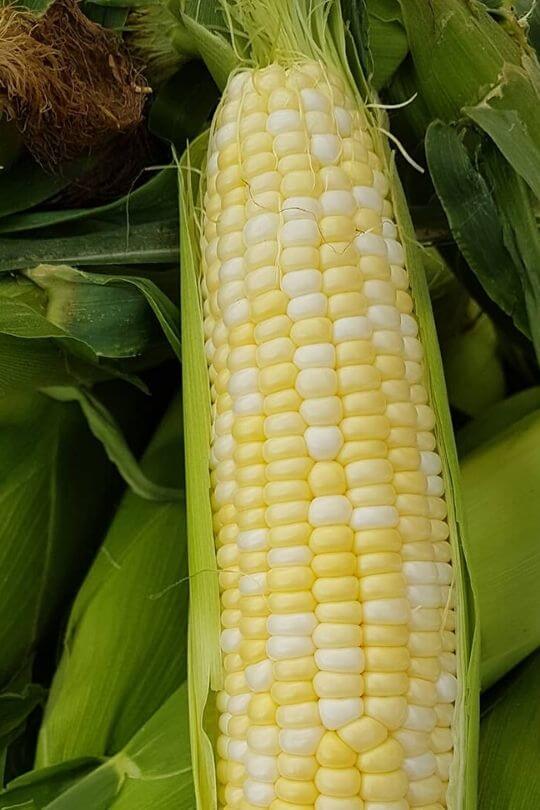
Do you want bi-color corn with yellow and white kernels? If so, Nirvana Hybrid offers you the best of both when it comes to the color of the kernels.
It’s known for being sweet, easy to grow, vigorous, and an overall lovely variety to grow in your backyard.
Something that gardeners remark about Nirvana Hybrid is that it’s a high-yielding crop, perfect for those with large families or those who want to preserve vast quantities of corn for the winter months.
Technically, Nirvana Hybrid is an SH2 sweet corn variety that has kernels plumper than usual. That means it has a sweet taste that is closer to the SE varieties of corn.
Perhaps best of all, this variety takes about 72 days to reach full maturity if you have it growing in full sun conditions.
4. Golden Bantam
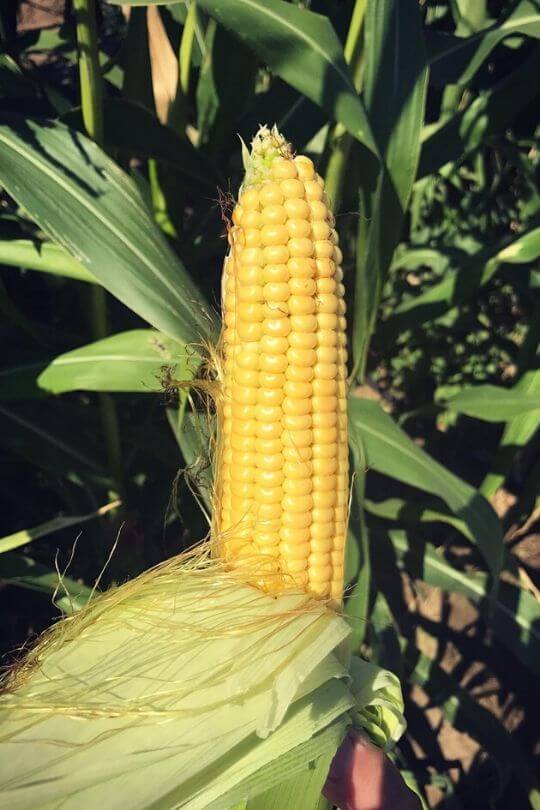
Here is the corn variety that made yellow sweet corn famous in the United States.
Burpee introduced this variety in 1902, a time when people only wanted corn with white kernels. It was thought that white corn indicated a high-quality product.
Luckily, people realized that yellow corn is just as good as other varieties, and Golden Bantam took the United States by storm.
It’s an SU type that sprouts quickly in cool soil so that you can plant it sooner than other sweet corn varieties.
Golden Bantam stalks reach about five feet in height and bear ears of corn that measure between 5 ½ to 6 ½ inches each. In about 80 days, you’ll have delicious, ripe corn ready to be eaten!
5. Blue Hopi
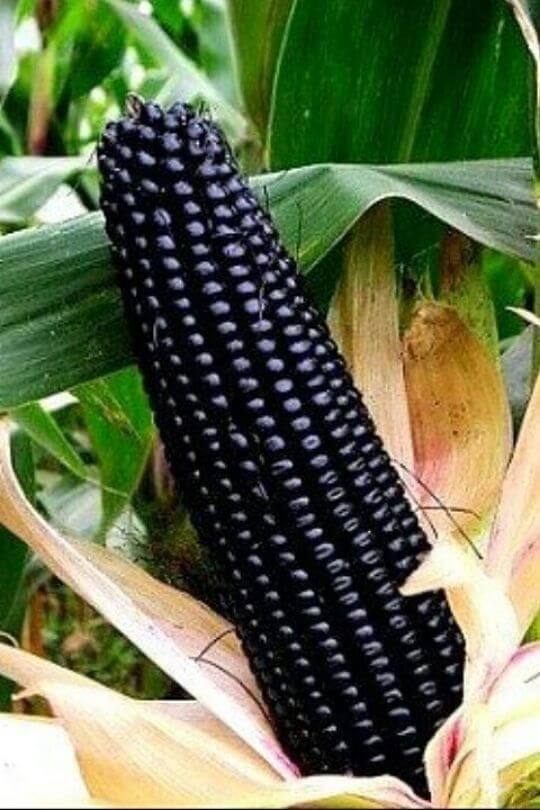
If you’re looking for a unique corn variety that isn’t the classic yellow, Blue Hopi is an heirloom, SH2 cultivar.
The stalks reach five feet tall with ears of corn that measure seven inches long.
What makes Blue Hopi different is that the ears are a dark blue, so not only can you eat the kernels, but it’s also a decorative variety that you can dry and hang.
Due to the dark color, Blue Hopi takes 100-110 days to mature fully.
Blue Hopi is a super-sweet variety that can be eaten when harvested or dried. You also can dry the kernels and grind into a flour that is great for tortillas.
6. Jubilee Hybrid
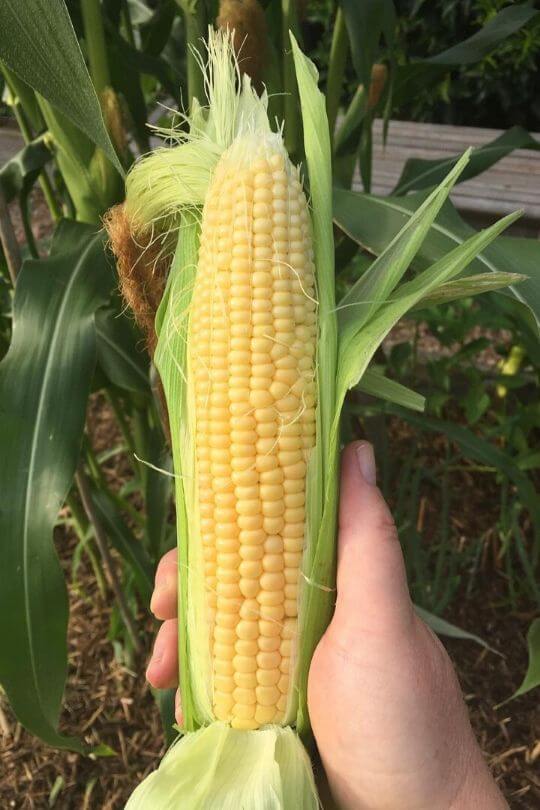
Here is a famous corn variety that is known for its massive yields. The ears measure almost nine inches long with up to 20 rows of bright yellow kernels. People love Jubilee because of its old-time corn flavor.
Jubilee is a standard SU corn variety, so it has more starch and less sugar. It does need to be eaten or preserved within five days of harvesting.
When harvesting, the corn should measure nine inches long with multiple rows of yellow corn kernels. If you’re looking for that classic corn flavor with less sugar, this corn could be for you.
Jubilee is a bountiful sweet corn variety, maturing in 90 to 1100 days with deliciously sweet corn.
You can eat it fresh, but it also is an excellent variety for processing and freezing. It also tastes great if you decide to can some jars of corn!
7. Peaches And Cream
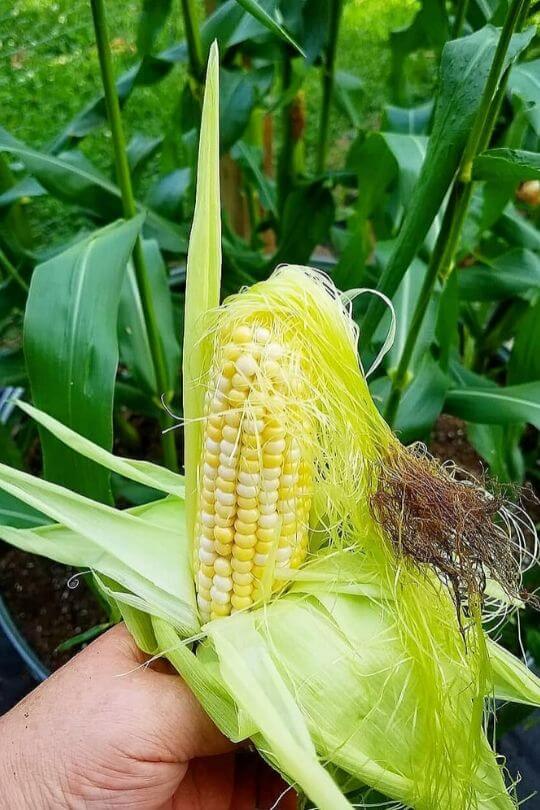
You don’t have to pick between yellow or white kernels! They’re both delicious, and Peaches and Cream corn is an SE variety of corn that yields both.
Aside from being a bi-color crop, Peaches and Cream stands out because it only takes 80 days to reach full maturity.
It also stays fresh for longer than other types of corn. If you sell your vegetables at farmers’ markets, roadside stands, or a CSA, this might be a great choice.
For best results, be sure to grow this corn in full sunlight. At full maturity, the stalks reach six feet tall with ears that measure eight to nine inches long. The ears should have 18-20 rows of bicolor kernels.
8. Picasso Hybrid
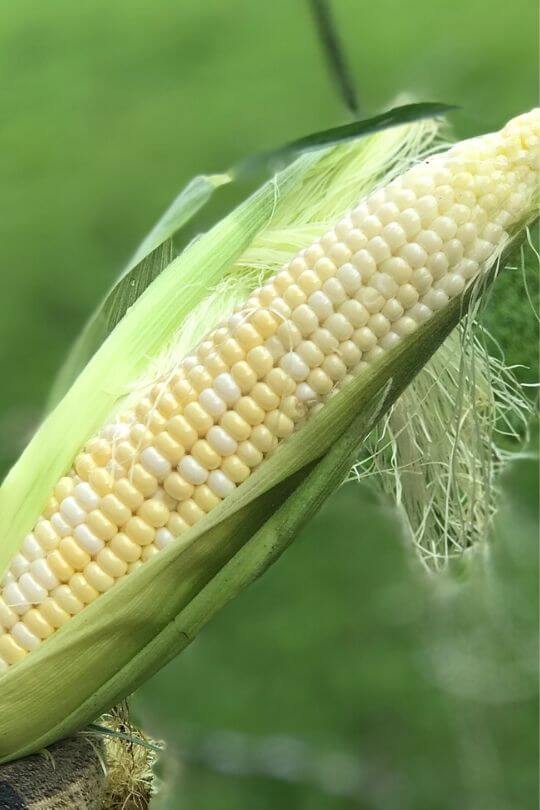
Do you want a sweet corn variety that tastes delicious and looks beautiful? Picasso Hybrid is an excellent choice for you because it has deep purple stalks and husks that contrast against white and yellow ears of corn.
Picasso corn measures eight inches at full maturity. The yellow and white kernels are sweet yet with a bit of a nutty flavor. It’s an SU corn type that reaches almost seven feet tall at maturity.
This is a versatile corn variety that works well in the kitchen and as a decoration.
You can bake, roast, or boil for dinner. Picasso Hybrid measures in 75 days if it has full sunlight conditions.
9. Ruby Queen Hybrid
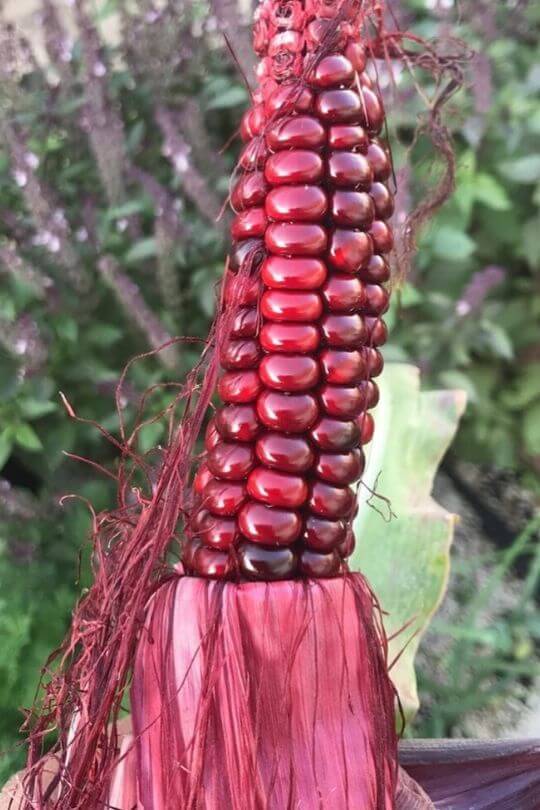
Here is a showstopping SE sweet corn that gets its name due to the deep, vibrant shade of red. That’s right!
This corn is a bright ruby color that you can serve to your family with dinner tonight. The kernels are sweet and tender despite the red color.
It’s vital to grow Ruby Queen when you select a location with full sunlight and rich fertile, well-draining soil.
You can harvest this corn earlier for a blush-red color that is super-sweet. The other option is to let it ripen fully to develop the rich corn flavor and color.
Ruby Queen is ready to harvest in 75 days on stalks that are 7 feet tall. The ears measure 8 inches long with 18-20 rows of yummy kernels. You can steam, boil, or microwave this corn!
10. Silver Queen Hybrid
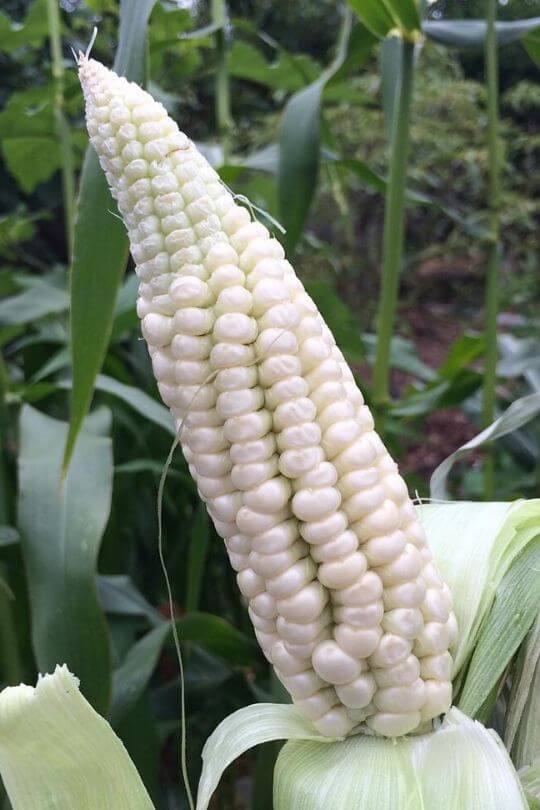
If you want a late-season SU corn variety, Silver Queen is a great choice, rivaling Ruby Queen.
Rather than bright red, Silver Queen produces bright white kernels that are flavorsome and highly productive compared to other varieties.
Some gardeners do say that Silver Queen is a bit more delicate rather others.
It produces ears that measure eight to nine inches long with 16 or more rows of white kernels. It takes 92 days to reach maturity on stalks that are eight feet tall!
11. Stowells Evergreen
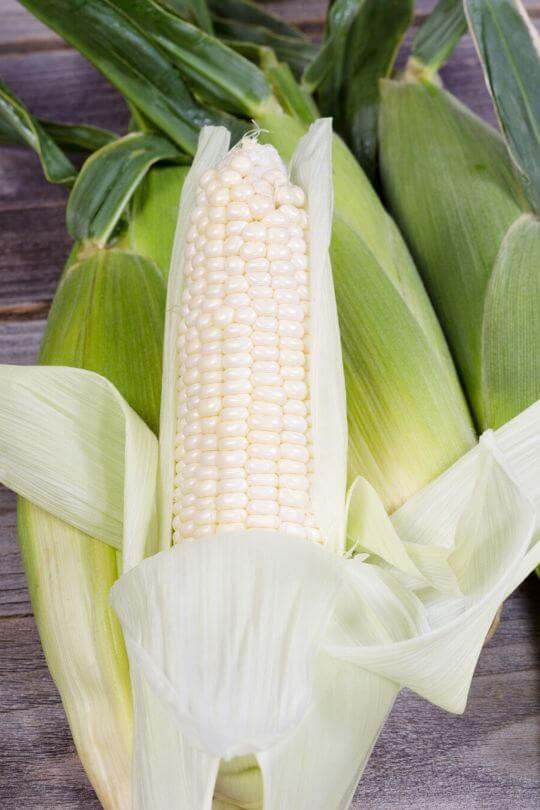
If you want an heirloom, open-pollinated corn variety, Stowells Evergreen is a fantastic choice.
It’s been a favorite of farmers since the 1800s and has continued to be an excellent choice. That means this is one of the oldest sweet corn on the market.
If you like history, you’ll love the stories told about Stowells. Farmers used to pull up the entire plant when the kernels were ripe and hang them upside down inside of a cool pantry. The ears stayed well for weeks!
Stowells Evergreen is an SU variety that is known for being highly productive and hardy, producing tender, sweet, white kernels that stay fresh for a long time.
It is a slow maturing variety that takes up to 100 days to harvest. The ears measure seven to eight inches long on stalks that are up to seven feet tall.
Final Thoughts
There are so many choices for the best sweet corn varieties. From red corn to white corn and everything in between, you can find the best variety that works best for your garden!

Written By
Amber Noyes
Amber Noyes was born and raised in a suburban California town, San Mateo. She holds a master’s degree in horticulture from the University of California as well as a BS in Biology from the University of San Francisco. With experience working on an organic farm, water conservation research, farmers’ markets, and plant nursery, she understands what makes plants thrive and how we can better understand the connection between microclimate and plant health. When she’s not on the land, Amber loves informing people of new ideas/things related to gardening, especially organic gardening, houseplants, and growing plants in a small space.
